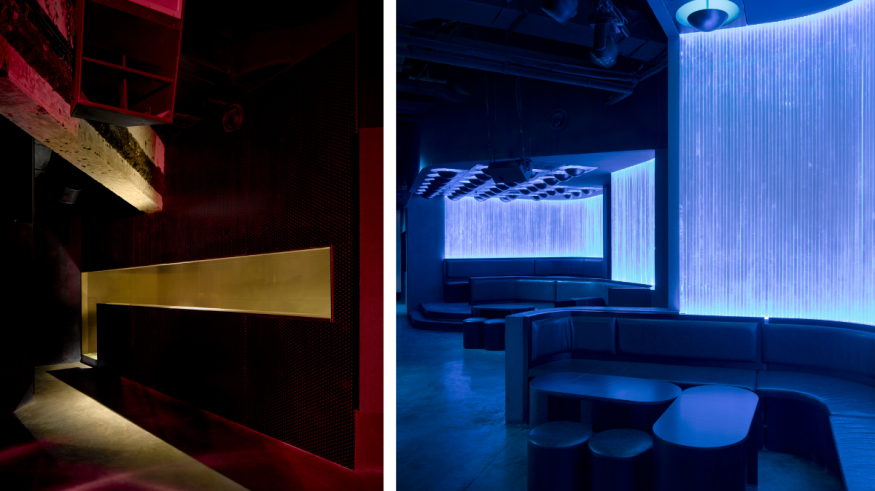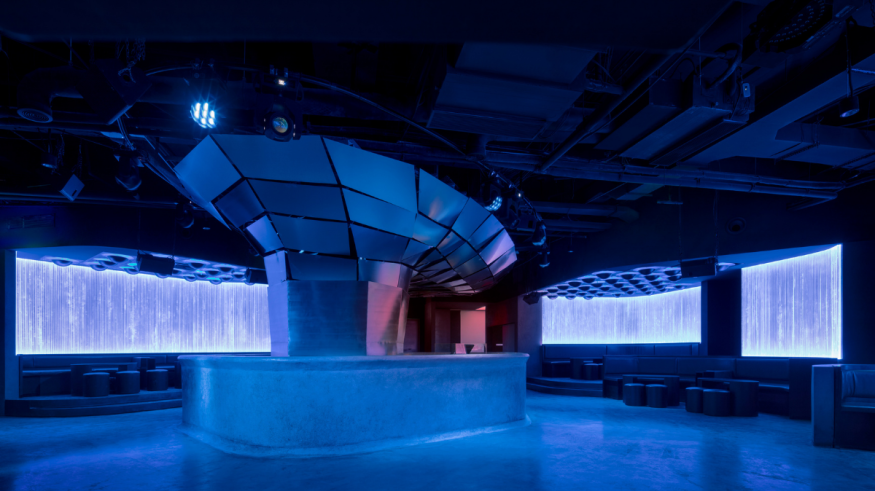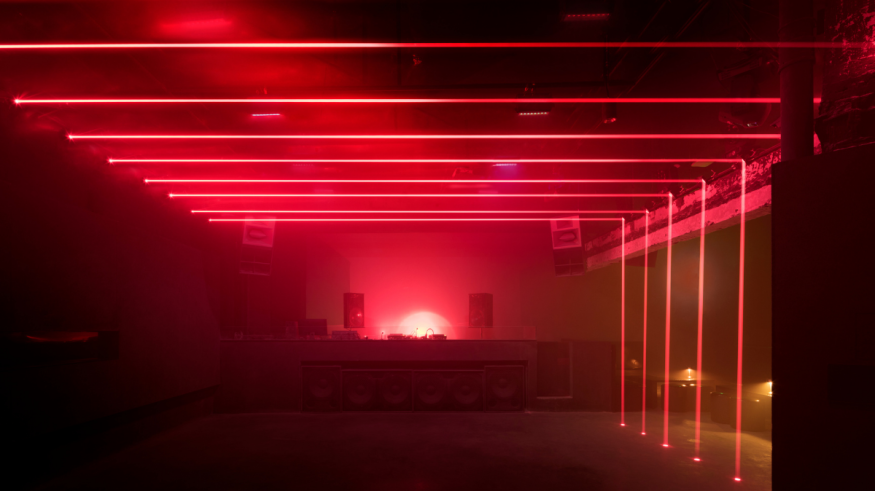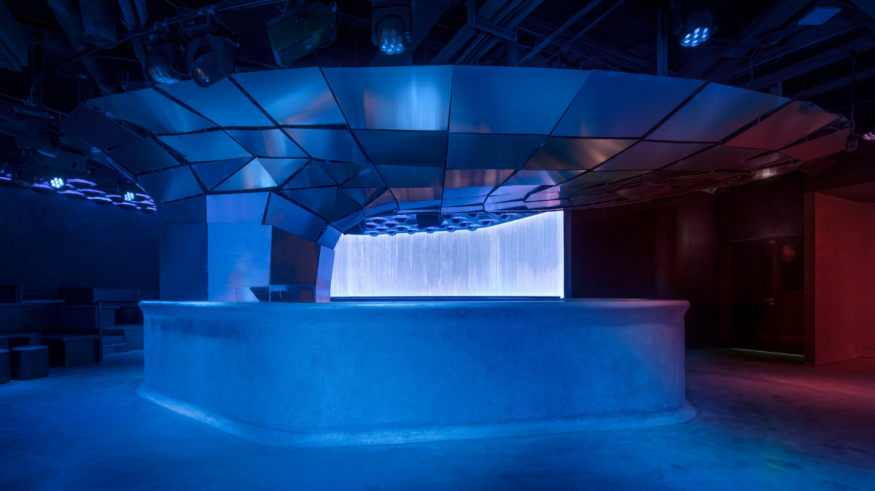
For Q&A (a studio where music goes hand in hand with design as a creative force) Shanghai is the symbol of rebirth after COVID-19, and designing new techno club Potent offered a chance to restart the city’s nightlife and recharge aspirations and hopes for the future.
With nightlife venues around the world being forced shut, 2020 has been a challenging year for clubbing. Streamed events have only partially filled the need for real-person encounters, and a longing for new clubs to open in China as elsewhere has grown strong especially among younger crowds and electronic music enthusiasts.
The 600sqm venue is located in the heart of Shanghai’s main commercial center within the new-ly built Huaihai TX, a lifestyle mall hosting an array of hip concepts from streetwear apparel stores to hot-pot restaurants, specialty coffee shops, art exhibition spaces and even a skating rink and an indoor snowboarding slope.
The design of the space draws from the many golden ages of clubbing and blends them to-gether with an eye on the future. Q&A’s vision started with a purely spatial approach based on the fluid and unbound nature of musical experience, and settled for a concept offering club-goers an immersive experience through the use of material and light, separated into two distinct spaces: a Light Room and a Dark Room.

The club’s entrance features a steel see-through wardrobe made of movable panels and parti-tions, which open up a space that can be used for pop-up events during weekdays. Next to it, a 10m LED-lit corridor leads to the Light Room. This bigger and brighter space hosts early-night music and hip-hop performances, and is enlivened by the glimmering light of 880 solid acrylic pipes covering the walls, while Pantone-inspired ceiling lamps create a dimmer atmosphere in the sitting area.
The curved walls in this space are welcoming and protective, inviting dancers to get lost in its many alcoves or to gather on the dancefloor. At the center of the space is the large ellipsoidal concrete bar, which is surmounted by a three-dimensional “disco-ball” made of laser-cut pol-ished steel panels and acts as a focal point of the Light Room.

Tucked behind one of the sitting nooks is the access to the Dark Room. The Dark Room is a more intimate space focused on techno music and late-night concerts. Its atmosphere is raw and in sharp contrast with the fluid and bright spaces of the main room: with shiny black vinyl sofas, dark steel tables, embossed and perforated steel panels for the walls, its different mate-rials and textures are barely perceived through the faint light. Traces of the original building structure are revealed here and there by the intermittent lights of laser beams shooting from the walls and enveloping the dancefloor, the real protagonist of the space.

Hopping from the Light Room to the Dark Room and vice versa, clubgoers are captured by the multifaceted possibilities of music as an alchemy for social encounters, and cannot but agree with us in feeling nightclubs are a crucial element of a city’s culture. With Potent, Q&A are giving their humble contribution to the cultural reawakening of Shanghai, one dance at a time.

--
Credits
- Source: Q&A - Quarta & Armando Architecture Design Research
- Creative Direction: Gianmaria Quarta, Michele Armando
- Architecture Photographer: Peter Dixie / LOTAN
- Portraits Photographer: Raul Ariano





